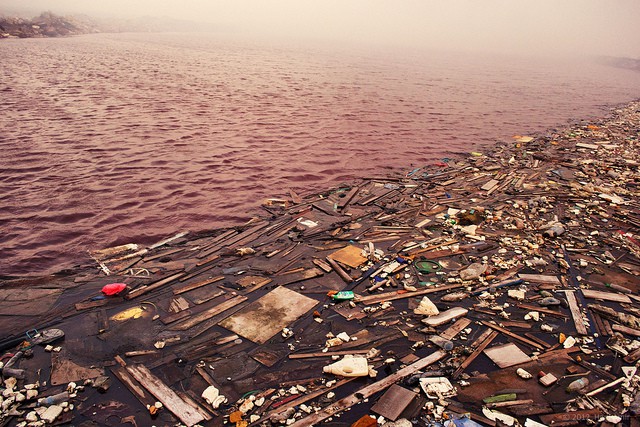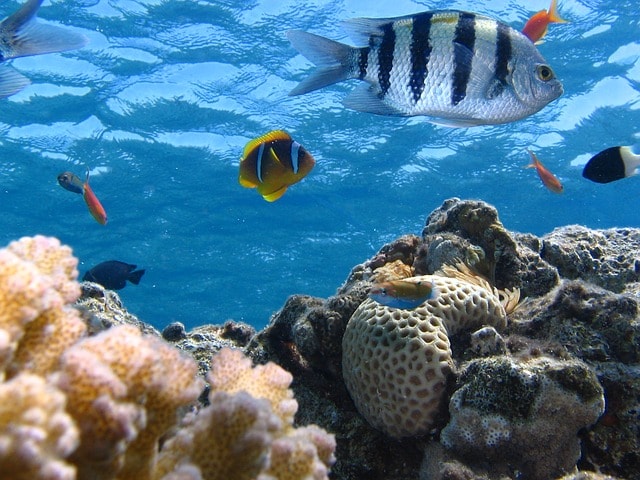25 Interesting Facts About the Rocky Mountains Known as ‘Rockies’ That Might Surprise You

The Rocky Mountains, known to us as just ‘The Rockies’, are the majestic north to the south mountain chain of North America. Millions of tourists visit ‘the Rockies’ for their scenic splendor, global significance, and intact ecosystem. But how much do you actually know about them?
The mountain’s name is a translation from Native American (Algonquin/Cree) name As-sin-wati, which means ‘a rocky mass’. By 1752, Montaignes de Roche, or “Rocky Mountains,” was the common French name, and apparently, everyone picked up on it; though when ‘The Rockies’ was coined is still unclear.
Find out all you need to know about the Rocky Mountains, from its history to geology to some interesting facts.
Birth of the Rockies
The rock that formed the core of the North American continent was believed to be formed approximately 1.7 billion years. When Africa and North America were coming together, it uplifted 320 million years ago, forming the Ancestral Rocky Mountain.
Eventually, the Ancestral Rocky Mountain eroded, leaving behind the current Rockies.
According to geological evidence, today’s peaks took shape during the Laramide orogeny, a phase of mountain building that occurred approximately 70 – 40 million years ago during the Cretaceous and into Tertiary period. It was during this period the Farallon Plate collided and began to slide underneath the North American continent.
The intense compressional forces resulted in major upfolding and uplifting of the Laramide ranges and formed topographically high areas including the Rockies.
Rocky Mountain Locations
The Rocky Mountain is a series of 100+ separate mountain ranges, rather than a single, long mountain chain. The Rockies extend 3000 miles through two countries, from British Columbia and Alberta in Canada through Idaho, Montana, Wyoming, Colorado, and down to New Mexico in the United States.
They are also distinguished by the Continental Divide, which winds its way through the mountains and separates the basins of the streams that flow down to the Pacific and Atlantic Oceans.
Rocky Mountain System Provinces
As per the topography, the Rockies are divided into the Southern Rockies, Middle Rockies, Northern Rockies (all in the United States), the Rocky Mountain system of Canada, and the Brooks Range in Alaska.
The Wyoming Basin, between Middle and Southern Rockies, is sometimes considered as a sixth physiographic province.
- Southern Rockies: Southern Rockies are full of canyons, waterfalls, rivers, and glaciers. The majority of them are in Colorado, with only small portions extending into South Wyoming and New Mexico. Some of the tallest mountain peaks in the Rockies are in Sothern Rockies – 14,000 ft plus titans including Mt. Elbert and Mt. Massive, for example.
- Middle Rockies: Comprises rugged mountains with a major portion in Wyoming, a mountainous state in the western United States. Middle Rockies are also spread into Oregon, Idaho, and Montana. Gannett Peak (4,202 meters) and Grand Teton (4,196 meters) are the tallest peaks in the middle Rockies.
- Northern Rockies: They encompass a major portion of western Montana, north-central Idaho, and north-west Wyoming. The northern Rockies have comparatively smaller mountains than those find in the Middle and Southern Provinces. Borah Peak, the tallest peak of the Northern Rockies, is only 3,857 meters high.
It is from this region the Rocky Mountain Trench and Purcell Trench originates.
- Rocky Mountain system of Canada: Has two major sections: massive peaks of the Canadian Rockies to the east, and the Columbia Mountains on the west. The Rocky Mountain Trench is the geological body that separates the Canadian Rockies and the Columbia mountains.
- The Brooks Range in Alaska: Named for the geologist Alfred H. Brooks. Sitting entirely within the Arctic circle, it is the northernmost extension of the Rockies. Home to massive peaks of 8000 – 9000 feet, it spans west to east across northern Alaska to Yukon.
Mt. Chamberlain (2,749 meters) is the tallest peak in the Brooks Range.
25 Interesting Facts About the Rocky Mountains (Rockies)
Fact 1: Sir Alexander MacKenzie, a British explorer was the first European to cross the Rocky Mountains. On July 20th, 1793, he arrived at British Columbia and made the first transcontinental crossing of North America.
Fact 2: The Lewis and Clark Expedition (1803-1806), also known as the Corps of Discovery Expedition, was the first scientific exploration of the Rockies.
Fact 3: With an elevation of 4,401 meters, Mount Elbert of Colorado is the tallest mountain in the Rocky chain.
It is situated in the Sawatch Range, where there are three other highest Rocky Mountain peaks: Mount Massive (4,398 meters / 14,428 feet) and Mount Harvard (4,396 meters/ 14,421 feet). On the Canadian side of the Rockies, this title goes to Mount Robson (3,954 meters), located in British Columbia.
Fact 4: Though the Rocky Mountain is a nearly continuous mountain chain, it varies in width from 70 – 300 miles (110 – 480 kilometers).
Fact 5: The Rocky Mountain National Park encompasses 415 square miles (1,075 km), a small fragment of the whole mountain range, in northern Colorado.
Other US National Parks that help conserve the Rockies include Grand Teton, Badlands, Yellowstone, Wind Cave, and Theodore Roosevelt National Park. In Canada, Watertown Lakes, Banff, Jasper, Kootenay, and Yoho National Parks protect and preserves the range.
Fact 6: The Rockies are home to Yellowstone National Park, the second oldest National park in the world, and the oldest ones in the United States.
Fact 7: Canada’s first national park, the Banff National Park, is in Alberta’s Rocky Mountains. Established in 1885, Baniff generates more than 8 million dollars a day for Alberta!
Fact 8: The best record of Cambrian animal fossils available to date is from the Burgess Shale, a fossil-bearing deposit found in British Columbia’s Yoho National Park.
Fact 9: Bison fossils indicate that Pleistocene humans migrated to southerly areas of North America along the Rocky Mountain route.
Fact 10: A 107-year old tea house still stands in Rocky Mountain National Park! In 1913, Ann Wolfram constructed it above a valley in Lake Louise for passing travelers.
Fact 11: Set in the Rocky Mountains of south-eastern British Columbia, Kootenay National Park is the only Canadian park with both glaciers and cactus plants.
Fact 12: The Rocky Mountains have been home to indigenous tribes including the Apache, Arapaho, Bannock, Blackfoot, Cheyenne, Crow Nation, Flathead, Shoshone, Sioux, Ute, Kutenai Sekani, Dunne-za and more.
Fact 13: One of the world’s restless giant volcanos is in Yellowstone National Park. Erupted about 640,000 years ago, the Yellowstone supervolcano has an eruption of magnitude 8 on the Volcanic Explosivity Index (VEI).
Fact 14: Alberta’s Rockies are home to five UNESCO World Heritage Sites: Dinosaur Provincial Park, Head-Smashed-In Buffalo Jump, Wood Buffalo National Park, Canadian Rocky Mountain Parks, and Waterton Glacier International Peace Park.
Fact 15: The Rocky Mountains are a wildlife paradise. They are home to as elk, moose, pronghorn, mountain goats, bighorn sheep, black bears, grizzly bears, coyotes, lynxes, and many other animals. Alberta-British Columbia foothills forest is where the largest herds of moose in North America is.
Fact 16: Rocky Mountain spotted fever was first identified in 1896 in the Snake River Valley on the southwest side of the Rocky Mountain.
This tick-borne disease is commonly seen in South-eastern and south-central parts of the United States.
Fact 17: Officially, Rocky Mountain National Park has three threatened species: Canada lynx, Greenback cutthroat trout, and Mexican Spotted Owl.
Then there’s North American wolverine listed as ‘Proposed threatened’ and Arapahoe snow fly – a candidate for listing.
Fact 18: Big Thompson River winding through Rocky Mountain National Park – it’s a sight to behold. But when it flooded in 1976, that was the most fatal disaster in Colorado’s history. In 2013, it flooded for the second time and caused $2billion in damage.
Fact 19: Peace River is the only river that penetrates the Canadian Rockies. Other rivers that originate in the range include the Bow River, Fraser River, Columbia River, North Saskatchewan River, and the Athabasca Rivers.
Fact 20: Kimberly, the mining town, located in the Purcell Range of the Canadian Rockies, produced close to 75% of the lead used the Allied forces in World War II.
Fact 21: Rocky Mountains’ climate is so unpredictable that snow can fall as late as June or July at high altitudes.
Depending on the landscape and time of the year, the temperature can jump between 35°C to -39°C. If you have hiking plans, pack appropriately.
Fact 22: One of the highlights of the Canadian Rockies is the hot springs. There are three major hot springs hotspots – Banff, Miette, and Radium – each different yet stunning.
Fact 23: Colorado’s largest and deepest natural lake, the Grand Lake, is a must-see in the Rocky Mountains. Ute Tribe called it the Spirit Lake as they believed that souls of the ancestors reside in its cold waters.
When you are in Colorado Rockies, visit the Grand Lake early in the morning, and you’ll see why it’s called Spirit Lake.
Fact 24: The Columbia Icefield, the largest sub-arctic icefield in North America is in the Canadian Rockies. It is actually the remnant of a large ice mass in Western Canada.
It feeds eight major glaciers including the Athabasca Glacier – the most visited North American glacier.
Fact 25: Sedimentary rock such as shale and limestone layer form the Canadian Rockies, whereas the American Rockies are made up of metamorphic and igneous rock, such as granite.
References:
https://www.worldatlas.com/articles/where-do-the-rocky-mountains-start-and-end.html
https://www.pnas.org/content/113/29/8057.abstract
https://www.niaid.nih.gov/diseases-conditions/rocky-mountain-spotted-fever






